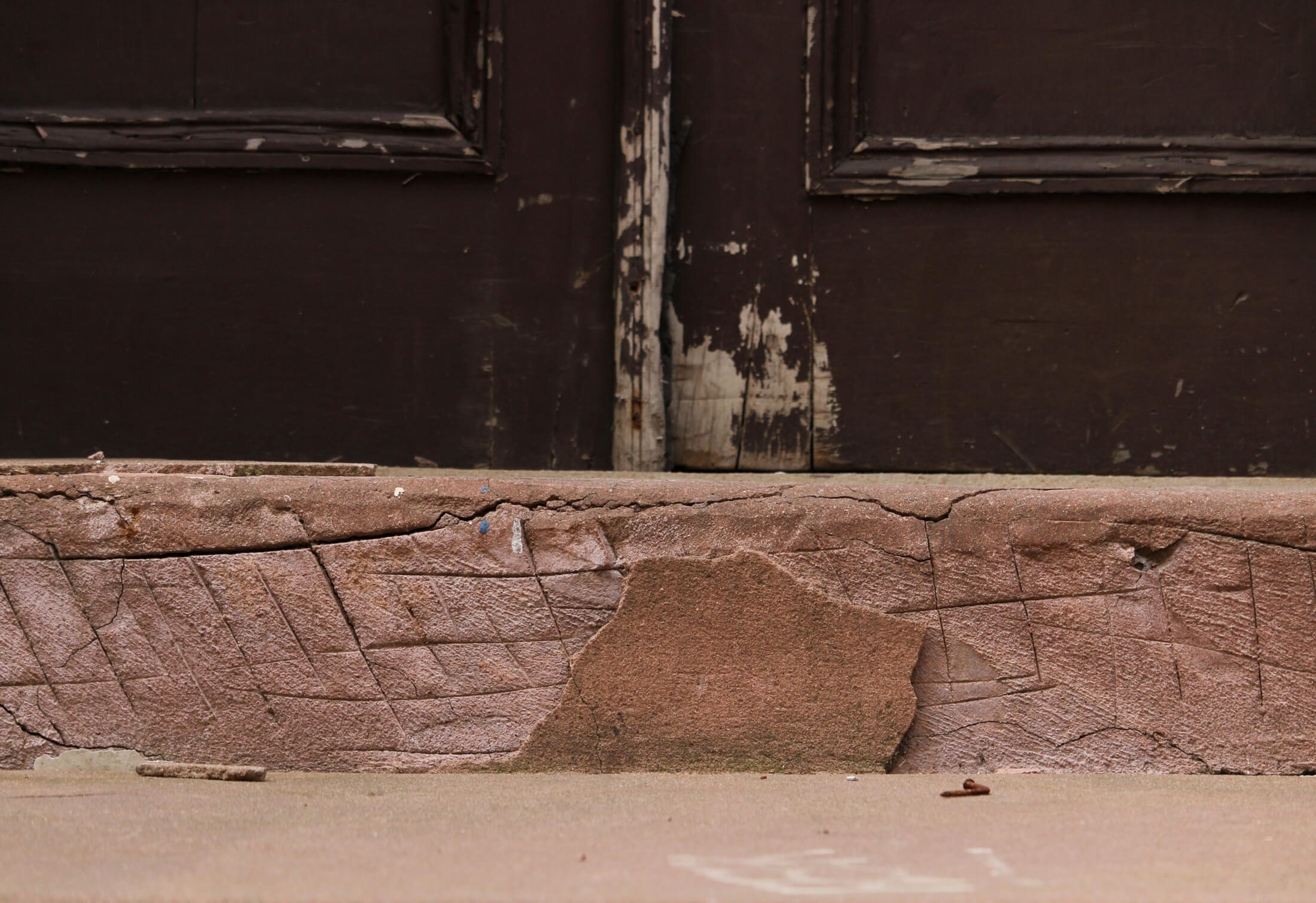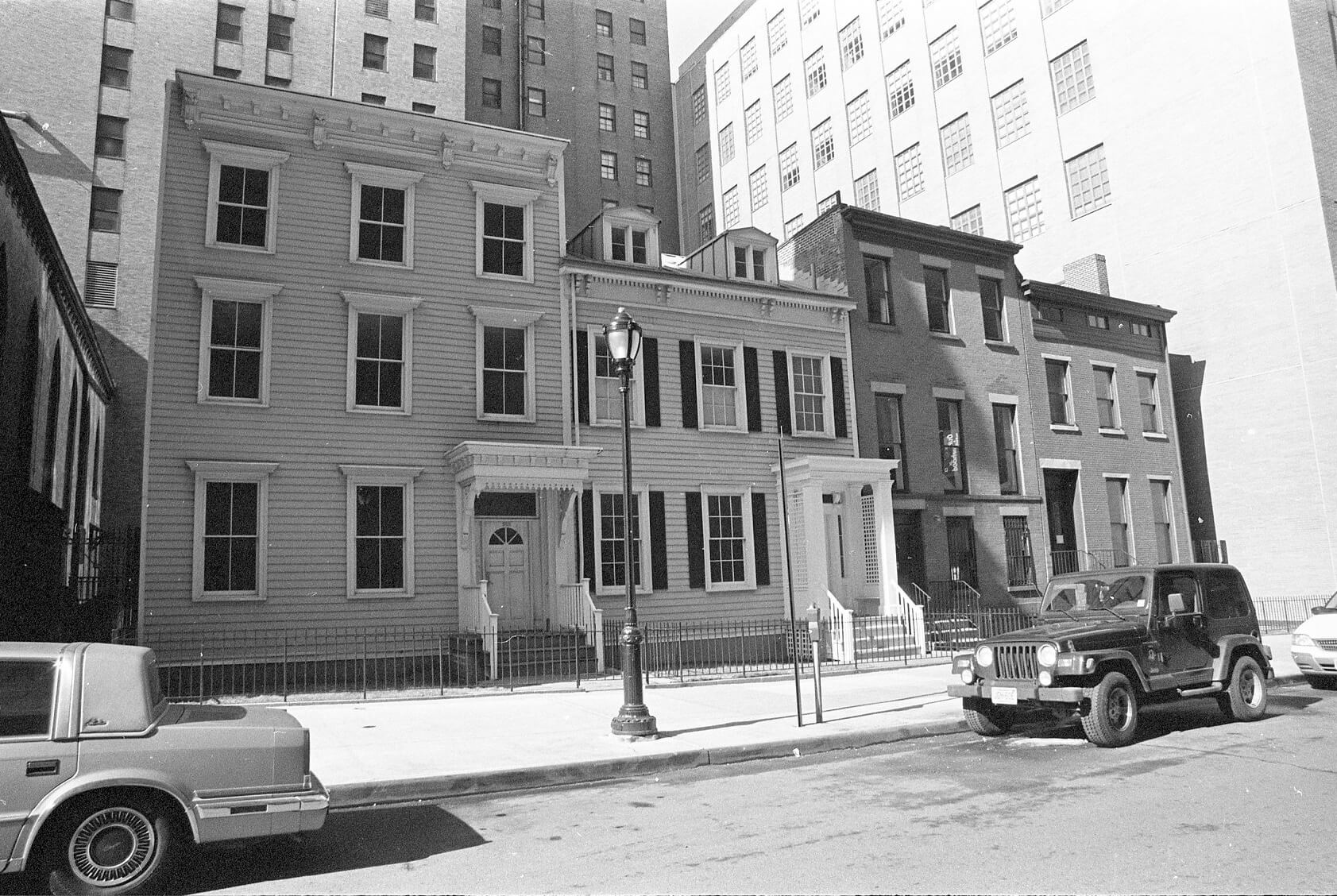The Deteriorating Details of the Empty Little Landmarks of Downtown Brooklyn
A wood railing, rotted away from its stoop, lies sprawled on the ground, once pristine latticework has vanished and bits of graffiti are scattered across white clapboard.

Photo by Susan De Vries
A wood railing, rotted away from its stoop, lies sprawled on the ground, once pristine latticework has vanished and bits of graffiti are scattered across white clapboard. Walks past the four early 19th century houses on Duffield Street in Downtown Brooklyn have shown a gradual deterioration of details as the properties continue to sit largely vacant decades after they were designated as individual landmarks.
The decorative details at the entries to the two frame houses at 188 and 186 Duffield Street have suffered the most over the last several years. In addition to the recently collapsed railing at No. 188, another section of railing has vanished and portions of door hood and front door moldings are missing. At No. 186, unchecked deterioration of the Greek Revival portico, called out in the designation report as a notable feature, has led to missing or broken elements such as railings, latticework and one of the small bench seats. Some of the details actually have a much more recent history, replicated in the 1990s after the houses were moved from their original location to make way for development.


The four houses, 182 through 188 Duffield Street, are a stretch of relatively rare survivors from what was once a vibrant Downtown residential community. Constructed between the 1830s and 1847 with some later alterations, they were part of a middle-class community and were lived in by lawyers, teachers, builders and merchants. Massive redevelopment in Downtown Brooklyn beginning in the 1970s with Fulton Mall and continuing with MetroTech in the 1980s spelled the end for many of the low-scale residences in the area.
These houses, now all one tax lot, were moved from their original location on Johnson Street in 1990 and designated as individual landmarks in 2001. They were owned by Forest City Ratner until the company transferred the property to Antlia Holdings LLC in 2018. Antlia was formed by Brookfield Asset Management Inc., which now manages the former Forest City Ratner property portfolio. Brownstoner reached out to Brookfield Asset Management for comment but did not hear back before publication.


There were early plans for houses to be used for offices for nonprofits and community organizations but those plans either did not materialize or did not last long. While a stretch of fluorescent lighting is visible on the second floor of the brick house at No. 184 and security staff has occasionally been spotted during walks by the houses over the last year, the petite landmarks continue to sit empty amidst the towers of MetroTech.
While the missing elements may seem minor, the conditions have been gradually eroding since at least 2019 and perhaps don’t bode well for the full maintenance and future of the properties as the former dwellings remain underutilized.
Another early 19th century house with a storied past, 227 Abolitionist Place-Duffield Street, sits a block away awaiting restoration and a plan for its future use.






[Photos by Susan De Vries unless noted otherwise]
Related Stories
- Vacant Architectural Curiosities on Duffield Street Change Hands With Forest City Ratner Merger
- Workers Spotted at Crumbling Abolitionist Landmark in Downtown Brooklyn
- What’s Next for the Landmarked House at 227 Abolitionist Place-Duffield Street?
Email tips@brownstoner.com with further comments, questions or tips. Follow Brownstoner on Twitter and Instagram, and like us on Facebook.









What's Your Take? Leave a Comment